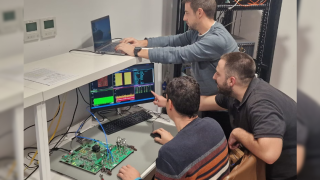The site, which spans 109,000 square metres, is located in Samsung’s Giheung campus, where the company developed the world’s first 64-megabit DRAM chip in the early 90s.
The new NRD-K facility will be used to explore new process technologies and manufacturing tools and will feature High NA extreme ultra-violet (EUV) lithography to accelerate next-generation memory semiconductors such as 3D DRAM and V-NAND with more than 1,000 layers.
Subscribe today for free
“NRD-K will bolster our development speed, enabling the company to create a virtuous cycle to accelerate fundamental research on next-generation technology and mass production, said Young Hyun Jun, vice chair and head of the device solutions division at Samsung.
Samsung broke ground on the site in 2022, with the company planning to invest KRW 20 trillion (US$14.8 billion) in the site by 2030.
An R&D-dedicated line is scheduled to begin operation at the site in mid-2025.
Samsung has been working extensively to develop smaller slimmer chips capable of powering AI workloads, like the LPDDR5X DRAM, which despite its size of 12 nanometres is capable of supporting 10.7 gigabits-per-second (Gbps) of performance.
The NRD-K will work to extend its efforts, with Samsung planning to use the facility to explore wafer-to-wafer bonding capabilities, or joining two semiconductor wafers together to form a single, composite wafer stack, considered a next-generation step in chips in terms of improving performance though tough in terms of issues around bonding process and managing thermal constraints.
“We will lay the foundation for a new leap forward in Giheung, where Samsung Electronics’ 50-year history of semiconductors began, and create a new future for the next 100 years,” Young added.
Around 100 guests were in attendance to inaugurate the site, including executives from suppliers and customers.
“At a time when the importance of win-win partnerships is greater than ever, Applied Materials is committed to accelerating innovation velocity through deep collaboration with Samsung Electronics, working together to drive a new wave of growth for the semiconductor industry,” said Park Gwang-Sun, head of Applied Materials Korea.
RELATED STORIES
SK Telecom, Samsung use AI to optimise 5G base station performance
Samsung and NTT Docomo team up to research AI-powered 6G technology






